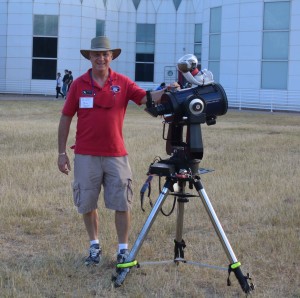Join Tucson Amateur Astronomy Association & Astronomy Magazine for our annual Tucson Star Party @ PCC East Campus. We will be observing from 10 AM – 9 PM. Solar viewing during the day along with other interactive exhibits. During the evening, we will have several telescopes set up to observe solar system & deep-sky wonders such as planets, galaxies, star clusters, nebulae, and lots more. Bring your own telescope if you want and we will have extra volunteers to help you if required.
Want to have a fun astronomy night in downtown Tucson? Hear interesting talks focused on Astronomy? Tucson is participating in a national astronomy program called “Astronomy on Tap” or “Space Drafts”. This program is sponsored by the National Optical Astronomy Observatory (NOAO) and UA Lunar & Planetary Lap (LPL). The Astronomy on Tap Space Drafts website is: https://astronomyontap.org/locations/tucson-az/.
The next Space Drafts will be Wednesday November 14, 2018 at 7 PM with the talks starting at 7:30. The event is held at Borderlands Brewing Company, 119 E Toole Ave, Tucson, AZ. The two scheduled talks are:
“Amateur Astronomy in Tucson” by Jim Knoll, Star Party Coordinator for the Tucson Amateur Astronomy Association.

“The first galaxies: coming soon to a space telescope near you” by postdoc Dr. Christina Williams, Steward Observatory.
Constellation of the Month:
Tucana
Presenter: Stephen Ferris
Stephen Ferris will start the night with a talk about the southern constellation Tucana.
Main Presentation:
Star Atlases
Presenter: Doug Smith
For our main topic, Doug Smith will be discussing Star Atlases.
NOTE DIFFERENT LOCATION FOR THIS MONTHS MEETING.
THIS MONTH ONLY we will meet in the Kuiper Building of Lunar and Planetary Sciences, 1629 East University Boulevard on the U of A Campus, just east of Flandreau Science Center. Room 308/Third Floor Auditorium (there is a ramp and elevator).
See Map
ALSO THIS MONTH, no one is signed up to bring refreshments so anyone who has time, PLEASE bring finger foods to share and put them on the table outside the auditorium.
6:30 pm – Introductory Presentation
Title: Member’s Night
Speaker: Various TAAA Members
If you would like to give a presentation, contact Mae Smith, ssmith@email.arizona.edu.
7:30 pm – Main Presentation
Title: The Parker Solar Probe: NASA’s Mission to Touch the Sun
Speaker: Dr. Joe Giacalone has been a Professor at the University of Arizona’s Lunar and Planetary Laboratory since 1993. He is Co-Investigator on the ISOIS (Integrated Science Investigation of the Sun) instrument on the Parker Solar Probe. This instrument will measure high-energy charged particles accelerated by magnetic fields near the Sun. Dr. Giacalone holds a PhD in Physics from the University of Kansas.
The Parker Solar Probe is truly a mission of discovery. Launched in August of 2018, this historic, seven-year mission has already flown by Venus, and made its first close pass of the Sun — closer to the Sun than any man-made object ever. It will get even closer in the years ahead; as near as 3.8 million miles from the Sun’s surface. Dr. Giacalone will discuss the mission, its goals, and what we expect to discover about the Sun.
A star party supporting International Observe the Moon. TAAA along with other astronomy organizations will be on the University of Arizona Mall near Flandrau Planetarium. Telescopes will be set up from 5 – 10 PM to view the Moon and other Solar System and Deep-Sky objects. We will also have a telescope dedicated to “Sky Souvenirs” for you to use your smart phone and our adapter to take a picture of the Moon. Flandrau Planetarium will be open for the event.
Constellation of the Month:
Piscis Austrinus
Presenter: Kay Lehman
Kay Lehman will talk about the northern constellation Piscis Austrinus.
Main Presentation:
Choosing and Using Telescope Eyepieces
Presenter: Joe Jacoby
Joe Jacoby will be discussing Choosing and Using Telescope Eyepieces.
6:30 pm – NO Introductory Presentation
7:30 pm – Main Presentation
Title: Hayabusa2: Exploring Asteroid Ryugu and Implications for the Future
Speaker: Adriana Mitchell is an undergraduate senior majoring in Optical Sciences and Engineering at the University of Arizona. She works with Professor Vishnu Reddy at the Lunar and Planetary Laboratory and Dr. Lucille Le Corre at the Planetary Science Institute, on the Japanese Aerospace Exploration Agency (JAXA)’s Hayabusa2 mission.
Visiting Near Earth Asteroids helps scientists understand conditions during the formation of the solar system and might help uncover where Earth’s water and organic materials originated. Adriana will discuss the large strides being made in asteroid exploration with the current asteroid sample-return missions; NASA’s OSIRIS-Rex mission to Bennu and JAXA’s Hayabusa2 mission to the asteroid Ryugu. She will explain the implications for these cutting edge missions and her involvement in the creation of imaging products critical for characterizing potential landing sites on Ryugu for JAXA.
April 13, 2019 @ 3:00 pm – 9:00 pm
Astronomy Festival at Brandi Fenton Memorial Park
Telescopes, Exhibits, Fun!
Saturday, April 13 from 3 to 9 pm
Brandi Fenton Memorial Park Ramada
ASTRONOMY FESTIVAL SCHEDULE
Hands-On Exhibits for Kids 3 to 6 PM
Safe Solar viewing of the Sun 3 to 6:30 PM
Night Sky Viewing 7:30 P.M to 9 PM
A Walk around the Night Sky Presentation at 8 PM
Kid-Friendly Scope viewing throughout the evening
Door Prizes will be given away at 7 PM – winners must be present
No charge for any activities, donations will be accepted.
Bring your own telescope for help setting it up and operating the scope.
A Total Lunar Eclipse will be visible in Tucson and surrounding areas this evening. The partial Eclipse begins 8:33 PM (Tucson Time), Total Eclipse begins 9:41 PM and ends 10:43 PM with maximum eclipse at 10:12 PM (Tucson Time).
The Tucson Amateur Astronomy Association will have several telescopes set up on the University of Arizona Mall just south of Flandrau Science Center. Viewing will be available from 8 to 11 PM. For real-time updates, follow our Facebook Event.












